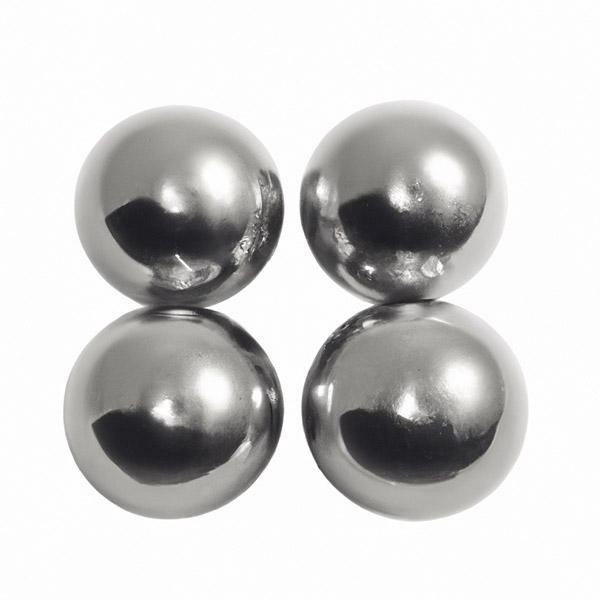
Ball magnets, also known as sphere magnets, are small, spherical-shaped magnets that are similar to sphere magnets. They are typically made from materials such as neodymium or ferrite, and are commonly used in a wide range of applications, including motors, sensors, and for holding or retrieving small items.
One of the key features of ball magnets is their relatively high magnetic strength for their size. This makes them useful in applications where a compact, powerful magnet is needed, such as in small motors or other devices where space is limited.
There are several advantages to using ball magnets over other types of magnets:
High strength-to-weight ratio:
Ball magnets have a high magnetic field strength per unit volume, which means they can generate a strong magnetic field while still being relatively lightweight. This makes them useful in applications where weight is a concern, such as in aerospace or medical equipment.
Durability :
Ball magnets are made of materials that are resistant to corrosion and wear, making them suitable for use in harsh environments.
Cost Effective :
Ball magnets are relatively cheap compared to other types of magnets and is one of the most cost-effective options for many applications.
We can custom manufacture Ball magnets to your exact specifications.
There are several methods to produce ball magnets, depending on the type of magnetic material used and the desired properties of the final product.
Here are a few common methods:
Powder metallurgy :
This method involves mixing a magnetic powder, such as iron powder, with a binding agent and a lubricant. The mixture is then shaped into a ball and heated to remove the lubricant and bind the particles together. The balls are then magnetized by exposing them to a strong magnetic field.
Injection molding:
This method involves mixing a magnetic powder with a thermoplastic binder and injecting the mixture into a mold in the shape of a ball. The balls are then heated to melt the binder and bind the particles together. The balls are then magnetized by exposing them to a strong magnetic field.
Sintered magnets:
This method involves mixing a magnetic powder, such as iron powder, with a binding agent. The mixture is then formed into the desired shape and heated under high pressure. The particles bond together to form a solid magnet.
Grinding and Lapping:
This method starts with a block of magnet and grind it into the shape of a ball, then use lapping method to smooth the surface and reach the desired tolerance.
Vacuum melting :
Some rare earth magnets such as Neodymium magnets are produce by vacuum melting, it's a highly advanced method that involves melting the rare earth element under vacuum, then casting it into desired shape and magnetizing it.
There are several materials of ball magnets available, each with their own unique properties and strengths.
The most common materials of ball magnets are:
Neodymium (NdFeB) :
These magnets are made from a combination of neodymium, iron, and boron, and are known for their high magnetic properties and strength. They are also very brittle and can be easily damaged if not handled properly. Common grades of Neodymium ball magnets such as Grade N38, N42, N50 and N52.
Samarium Cobalt (SmCo) :
These magnets are made from a combination of samarium and cobalt and are known for their high temperature stability and resistance to demagnetization. They are typically more expensive than neodymium magnets and are not as strong. The most common grades of SmCo ball magnets are: Sm1Co5, Sm2Co17, SmCo5.
AlNiCo:
These magnets are made from a combination of aluminum, nickel, and cobalt and have been used for several decades. They are known for their stability under temperature variations but are not as strong as neodymium magnets. The most common grades of Alnico ball magnets are: AlNiCo 2, AlNiCo 3, AlNiCo 5, AlNiCo 8.
We provide Ball magnets according to your customized requirements.
Ball magnets, also known as spherical magnets, are spherical-shaped magnets that are commonly used in a variety of industrial, scientific, and hobby applications. Some examples of applications of ball magnets include:
Motors:
Ball magnets are often used in motors, particularly in the rotor or stator of an electric motor, where they can be used to generate a magnetic field.
Magnetic Therapy :
Ball magnets are commonly used in magnetic therapy, which is a type of alternative medicine that uses static magnets to alleviate pain and promote healing.
Holding and Retrieving:
Ball magnets are often used in holding, retrieving, and lifting applications, such as in metalworking and construction, where they can be used to hold metal objects in place or to retrieve metal objects that have fallen into hard-to-reach areas.
Magnetic Separation :
Ball magnets are also used in magnetic separation applications, where they are used to separate magnetic materials from non-magnetic materials.
Sensors:
Ball magnets can be used in sensors, such as proximity sensors, which can detect the presence of metal objects.
Toy and hobby:
Ball magnets also have hobby application such as in building models, and in creating magnetic-based toys, such as magnetic balls and puzzles.
Service every customer with care & professional.
Professional Production Base
AEMagnets is equipped with a complete set of advanced equipments and processing facilities in particular high standard cleaning room.
Strict Quality Control - ISO9001
We runs a strict quality control system involving raw materials selection, production control, product inspection, fine packing.
Timely and Attentive Service
We strive to provide fast and efficient service to meet your deadlines and provide full technical and after-sales service support.

